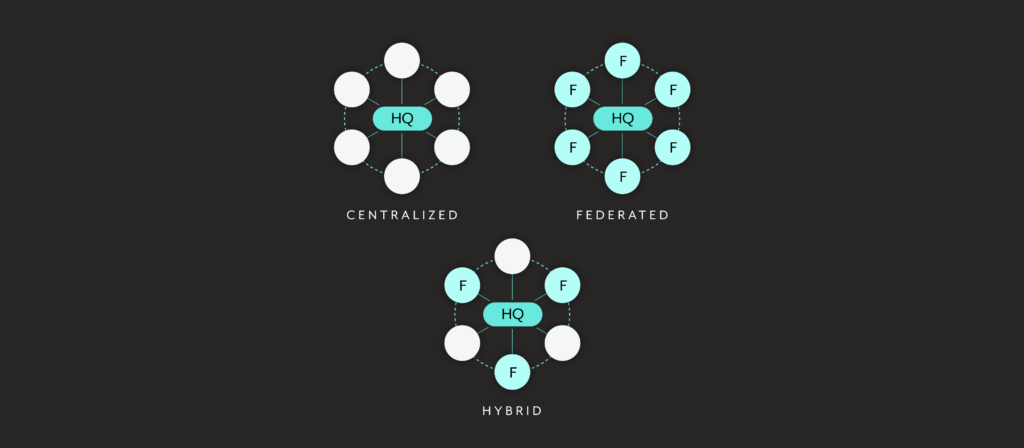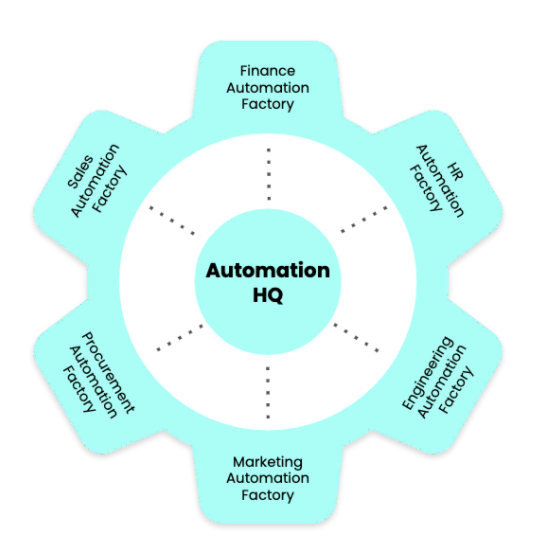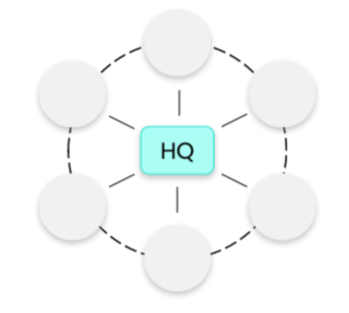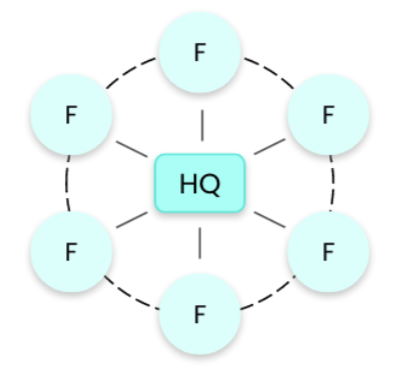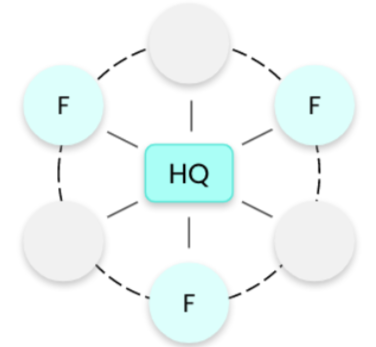Organizations are increasingly relying on automation to transform their operations.
When we analyzed the processes our clients automate most frequently, for example, we saw 100%+ growth across the board since the pandemic began.

While organizations are clearly enthusiastic about using automations, running them successfully is a whole nother issue that requires identifying and implementing the right automation operating model for the business.
Each automation operating model has strengths and weaknesses in different areas, whether that’s delivery speed or procedural adherence. As a result, you’ll need to review each option carefully before making a decision.
We’ll help you assess your options by sharing the strengths and weaknesses of 3 common automation operating models, where all but one includes both of the following:
- Automation HQ: a small group of technical experts who own the governance and security policies behind your automations, as well as enablement initiatives for Automation Factories
- Automation Factories: comprise of citizen integrators, app admins, and IT operations personnel who work on automations that fall under a specific category (e.g. sales automations)
With this context in mind, let’s break down each model.
Related: How the Enterprise Systems team at Box enables business teams to build automations safely
1. Centralized model
Using a centralized model, your Automation HQ builds, delivers, and maintains all of the automations. Your Automation HQ also receives all of the funding to execute the automation projects.
Pros
- A great starting point for an automation program, as it gives the Automation HQ team a chance to deliver initial business value before investing the time and resources in establishing Automation Factories
- The hands-on experiences gives the HQ a chance to identify the best processes for bringing automations through to production
- Ensures your automations follow certain standards and best practices
Cons
- The Automation HQ may not have enough expertise with the business applications and processes to build the automations on their own, leading them to be highly dependent on lines of business
- With only a select few builders, backlogs are all but certain to build up, delivery speed will get compromised, and adjustments or fixes will get delayed
- The HQ’s decisions on which automations get prioritized may not align with the needs of business teams
Related: Why automation governance is critical and how you can perform it
2. Federated model
Nearly opposite to the previous model, this one has Automation Factories managing the design, implementation, and maintenance of automations; the Automation Factories are also funding their respective efforts.
The Automation HQ, meanwhile, still owns security and governance, but their day-to-day focus is on enabling the Automation Factories through educational initiatives and by providing accelerators, like reusable assets (e.g. error handling framework) and automation templates.
Pros
- With a significant number of builders involved, any backlogs or issues related to deliver speed can be more easily avoided; moreover, your automations can be agile and easily adjust to changes in business requirements over time
- The level of domain and technical expertise in a given Automation Factory enables it to prioritize the right set of automations and build them with minimal external intervention
Cons
- Though not necessarily a con, the governance processes will need to be kept lightweight in order to prevent bottlenecks and to ensure that the Automation HQ doesn’t need to scale alongside Automation Factories
3. Hybrid model
This model is a combination of the two above, where Automation Factories build and maintain automations under the supervision of the HQ, while the latter also owns the more complex automation projects. In terms of funding, it can be managed centrally (like the centralized model), by Automation Factories (like the federated model), or a mix of both.
Pros
- With supervision from the HQ, the automations are likely to meet the organization’s standards and best practices
- Allows the Automation Factories to mature and get comfortable before operating more independently
Cons
- Given that the HQ still owns certain automations and oversees those built by the Automation Factories, some degree of backlogs can arise and the speed of delivery for the automations they own may get compromised
- May require close communication between the Automation HQ and the Automation Factories to ensure they’re aligned on the current conditions and the direction of the automation program
Related: Why app connectors are key to scaling your automation practice
Choosing the model that’s right for you
If your organization is like most, it should start with the centralized model.
This gives you time to establish and enable your Automation Factories, while allowing your team to start providing business value through early automation projects.
Once you feel comfortable giving your Automation Factories some control, you can move on to the hybrid model; and once this transition goes smoothly and your Automation Factories have the capacity to implement their automations independently, you can move on to the federated model.
You may also stick to a certain model based on the way your business operates. For example, if your organization doesn’t have the personnel required to fill your Automation Factories, then you may be forced to use a centralized model (at least for the time being); and if your confident that your Automation HQ can, for the foreseeable future, build the automations your lines of business need, quickly, then there also may not be a need to look beyond the centralized model.
In most cases, however, the transition from centralized to hybrid and from hybrid to federated is a necessary evolution, as it allows your organization to move towards automating at scale successfully.
Adopt an automation operating model with Workato
Workato, the leader in enterprise automation, allows you to implement any of these models through its low-code UX and enterprise-grade governance and security features.
On top of that, our enterprise architects, customer success managers, and partners all leverage our GEARS framework (govern, enablement, adoption, run & optimize, and scale) to help you implement any one of these models.
